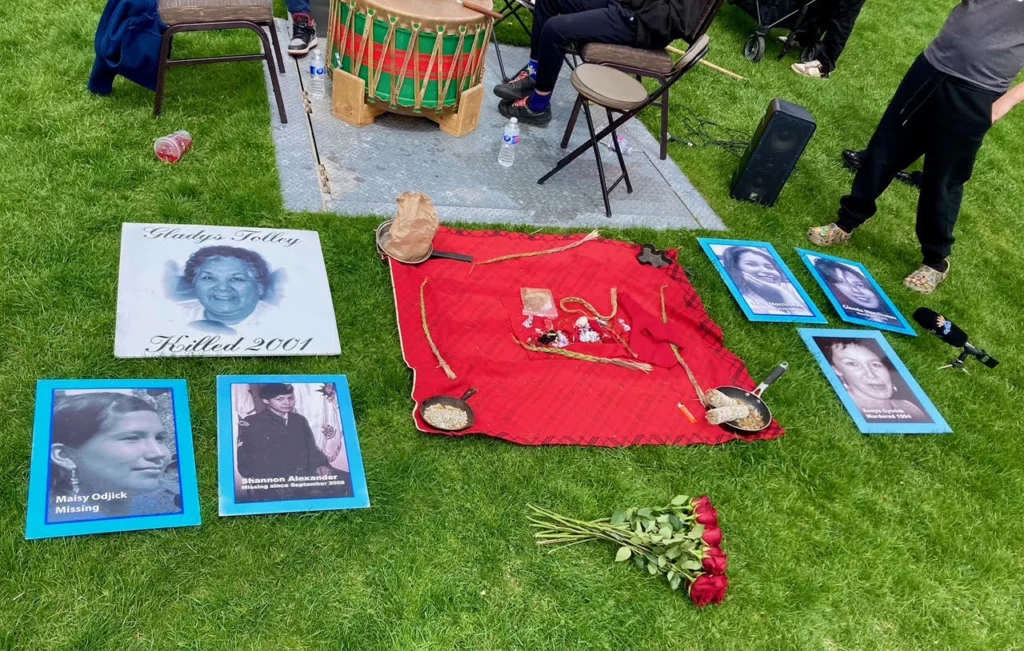On May 5th, 2025, Pauktuutit Inuit Women of Canada, Les Femmes Michif Otipemisiwak (LFMO), the Ontario Native Women’s Association (ONWA) and 2 Spirits in Motion Society (2SiMS) announced a collaborative, Indigenous-led data project focused on Missing and Murdered First Nations, Métis and Inuit Women, Girls, Two Spirit and Gender-diverse Peoples.
This collaborative data project seeks to enhance public understanding of MMIWG2S+ crisis, strengthen advocacy and highlight the lack of action from Canada since the National Inquiry.
Q: What is the MMIWG2S+ Database project?
A: Pauktuutit Inuit Women of Canada, Les Femmes Michif Otipemisiwak, the Ontario Native Women’s Association, and 2 Spirits in Motion Society are collaborating on a data collection project focused on Missing and Murdered First Nations, Métis and Inuit Women, Girls, Two Spirit and Gender-diverse Peoples (MMIWG2S+). Partners are working alongside trusted data and research organizations CDCI and Wampum Records — who previously worked together to build the online data repository for the National Centre for Truth and Reconciliation.
The project seeks to enhance understanding of the crisis, strengthen advocacy, raise awareness and advance the 231 Calls for Justice identified by the National Inquiry into Missing and Murdered Indigenous Women and Girls.
Q: How were these project partners chosen and invited to participate?
A: Invitations were sent to First Nations, Métis and Inuit organizations currently working on MMIWG2S+ data projects and who could respond to acknowledged gaps in MMIWG2S+ data.
Q: Why is this project important?
A: There is no national database for Missing and Murdered First Nations, Métis and Inuit Women, Girls, Two Spirit and Gender-diverse Peoples(MMIWG2S+) and existing data is incomplete. We don’t know exactly how many cases of MMIWG2S+ have occurred in Canada, but according to Statistics Canada: between 2009 and 2021, the rate of murdered First Nations, Métis and Inuit Women and Girls was six times higher than the rate among non-Indigenous women and girls. It is important that members of non-Indigenous communities understand how violence
affects First Nations, Métis and Inuit Women, Girls, Two Spirit and Gender-diverse Peoples. If we can better inform and change the way the Canadian public thinks about this crisis, we are in a better position to advocate for systemic and policy change.
Q: What are the goals of this project?
A: The goal of this project is to visualize public data in a single space for researchers, policy makers and affiliated organizations — so we may address the root causes of violence against First Nations, Métis and Inuit Women, Girls, Two Spirit and Gender-diverse Peoples. The project will strengthen ongoing advocacy efforts and pressure the Government of Canada to implement all 231 Calls for Justice identified by the National Inquiry into Missing and Murdered Indigenous Women and Girls.
Q: When can we expect the national database to be ready?
A: Currently, the database project is focused on data collection — which will take time. We are currently in the early stages of development and are still collecting data. To ensure we are accomplishing this in a good way, we are taking a trauma-informed approach. We currently don’t have a publication date but we will provide an update when we have a better idea.
Q: Who will have access to the database?
A: As of right now, we are still in preliminary stages of collecting data and conducting community outreach to determine how data will be used.
Q: How is this project funded?
A: Project funding is provided by Indigenous Services Canada (ISC) and Crown-Indigenous Relations and Northern Affairs Canada (CIRNAC).
Q: How does Two Spirit and Gender-diverse data differ from data collected about
women and girls?
A: There are many misconceptions about Two Spirit and Gender-diverse identities outside of First Nations, Métis and Inuit communities. Police forces, child welfare services and social services lack understanding, which leads to unreliable and inaccurate data.
Q: Where is the data for the MMIWG2S+ project coming from?
A: We are researching from publicly available sources in collaboration with CDCI Research and Wampum Records.
Q: What does ‘publicly available data’ mean?
A: Publicly available data is information recorded and stored by various organizations — such as government agencies — that can be accessed by researchers. Although some of our data collection will require a request to access, this information can be released to any researcher making a similar request because it doesn’t fall under the Privacy Act.
Q: How are Indigenous communities involved in the MMIWG2S+ database?
A: This project was started in response to requests heard from various First Nations, Métis and Inuit communities — including Pauktuutit’s board of directors. Because we are using publicly available data, the first phase of the project is dedicated to research. Over the next 3 years, partner organizations will engage with First Nations, Métis and Inuit communities. We also invite community members to contact partner organizations directly.
Q: Will you be accepting more project partners?
A: Yes. Over the coming year, the project partners will be developing and implementing community engagement plans to establish guidelines and expectations around data use and seeking to form a diverse and independent advisory committee for the project. Indigenous-led organizations are invited to share data with us to reduce duplications of and to help complete the national dataset.
We ask Indigenous-led organizations interested in being part of this project to please reach out to the Violence and Abuse Prevention and Justice Team at Pauktuutit.
